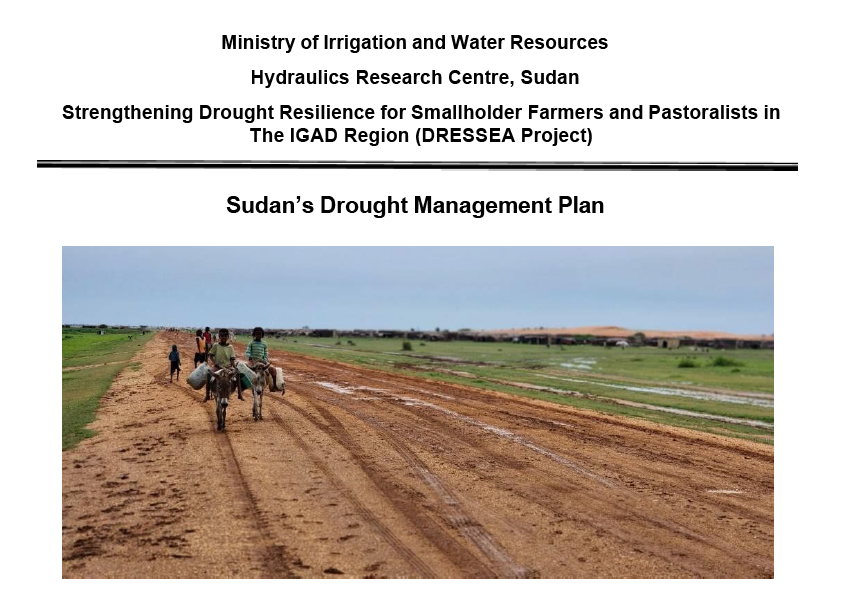Report Summary
The Sahelian region of Sudan grapples with enduring challenges related to drought, which are intensified by environmental degradation and socioeconomic hardships, consequently impacting agricultural productivity and the livelihoods of pastoralist communities. Historical instances of drought have led to famine, compelled migration, and economic turmoil, as demonstrated by reduced agricultural yields, degraded grazing territories, and increased social discord, with smallholder farmers and pastoralists in western and central Sudan being particularly susceptible.
In response to these adversities, Sudan (represented by the Hydraulics Research Centre – Ministry of Irrigation and Water Resources) is executing the DRESS-EA initiative (Strengthening Drought Resilience for Smallholder Farmers and Pastoralists in the IGAD Region), which is financed by the Adaptation Fund and implemented by the Sahara and Sahel Observatory (OSS). The primary objective of this initiative is to bolster the resilience of communities across the IGAD region against the threats posed by climate change, with a concentrated emphasis on drought. As a result, a central goal of the initiative is to develop this Drought Management Plan aimed at alleviating the impacts of drought, fostering sustainable agricultural practices, and building community resilience in the country.
Drought in Sudan severely impacts agriculture, livestock, water resources, food security, and rural communities, leading to reduced productivity, economic instability, and increased poverty. Therefore, this proposed Drought Management Plan outlines a comprehensive framework aimed at enhancing the country’s resilience to climate change-induced droughts. Recognizing the escalating frequency and severity of droughts, the plan articulates strategies that integrate scientific research, technological advancements, and sustainable practices. It emphasizes proactive management through improved drought monitoring, forecasting, and a robust communication protocol.
The drought-risk assessment in Sudan identifies three regions—high, medium, and low-risk—based on factors like precipitation shortfalls and socio-economic vulnerability.
High-risk areas include Northern, Eastern, Western, and Central Sudan. These areas, particularly Northern and Eastern regions and Darfur suffer from erratic rainfall and socio-economic challenges, leading to severe drought impacts. Key factors contributing to high-risk classification are significant precipitation deficits, vegetation degradation due to overgrazing and unsustainable practices, and socio-economic vulnerabilities such as poverty and reliance on subsistence farming. These challenges exacerbate water shortages, decrease agricultural productivity, and heighten economic hardships during droughts, especially for rural communities.
Key recommendations include identifying high-risk areas where interventions may take place, implementing effective response actions, and ensuring the active involvement of stakeholders including communities and particularly gender-sensitive groups through continuous engagement. Also, the plan underscores the need for substantial financial resources from both domestic and international partners to successfully implement these proposed initiatives. It also highlights the importance of research and development in strengthening institutions capable of predicting drought incidence and supporting climate-resilient agricultural systems.
Furthermore, the plan advocates for regular updates and revisions every 3-5 years to adapt to evolving environmental and socio-economic conditions, ensuring that strategies remain aligned with national and international policies. By focusing on sustainable strategies and identifying vulnerable sectors, the plan aims to mitigate the adverse impacts of drought on Sudan’s economy and population, ultimately fostering a path toward a resilient and sustainable future.
Prepared by:
Ahmed A. H. Siddig1, Nusseiba Nour Eldeen2, Yousif Elnour Yagoub3, and Karam Ibrahim4

